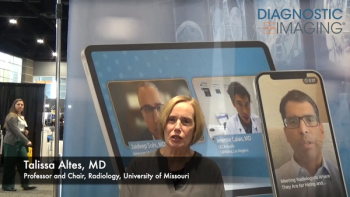
Philips CFO deflects questions about RSNA unveilings
Digesting the mediocre performance by Philips Medical in the third quarter, financial analysts peppered Pierre-Jean Sivignon, chief financial officer of Koninklijke Philips Electronics, with questions about the company’s plans for the upcoming RSNA. They were looking for reasons to believe the CFO’s assertions that Philips’ financials would soon improve.
Digesting the mediocre performance by Philips Medical in the third quarter, financial analysts peppered Pierre-Jean Sivignon, chief financial officer of Koninklijke Philips Electronics, with questions about the company's plans for the upcoming RSNA. They were looking for reasons to believe the CFO's assertions that Philips' financials would soon improve.
Two analysts drilled Sivignon about statements he previously made.
"You talked early on about having a new PET/CT platform before year end. Is this the long track, and could this have an impact on growth for the rest of the year?" asked UBS analyst Nicolas Gaudois.
Robert Sanders, an analyst with Dresdner Kleinwort followed up.
"You said you are launching a lot of new products like portable ultrasound. Are any of those going to be contributing to this year's sales, or is that more about next year's sales?" he asked.
Sivignon's answers were considerably less on target than the questions. The Philips CFO deferred his responses until after the start of RSNA, citing the need to keep Philips' innovations under wraps. But he raised the issue himself several times earlier in the teleconference held Oct. 15, following the company's release of third quarter financials.
"I am mentioning RSNA because, of course, I want to send some signal for the growth next year of medical," he said. "But I am really reluctant to say much more. We are very disciplined not to talk ahead of it in terms of specifics."
Sivignon slipped a bit, however, when asked about the severity of the DRA's impact on CT sales and concerns that new CT products will erode the street prices of existing ones.
"As far as the introduction of new CT equipment is concerned, I think we've been in CT now for some time, and I am expecting that if we were to announce the new products on the back of RSNA, we would be able to do that in an efficient manner," he said. "New things will have to be introduced and will have to be done in a professional manner. I think that's what we're counting on."
As Sivignon has noted in response to analysts' questions in the past, product introductions at the RSNA occur too late to have a positive effect on the last quarter of the calendar year. Orders for major equipment such as CT, MR, or PET/CT require months--not weeks--to fill. They will, however, have an impact on the following year, which is why Sivignon said he was positive about 2008 prospects for the company.
Newsletter
Stay at the forefront of radiology with the Diagnostic Imaging newsletter, delivering the latest news, clinical insights, and imaging advancements for today’s radiologists.




























